
Low Dye Taping for Plantar Heel Pain
What is low dye taping for plantar heel pain?
The use of low dye (zinc oxide) taping is often very helpful in the treatment of plantar heel pain (plantar fasciitis). The taping technique is designed to support the foot position from flattening excessively, takes the strain off the plantar fascia, and keeps the natural fat pad underneath the heel.
Treatment varies with each individual and is most effective when combined with plantar fascia stretching and individualised education.
When can I apply the tape?
The tape can be applied in the morning, or just prior to any physical weight-bearing activities such as running or walking.
As a general rule, the tape can be kept on for two to five days. Some may prefer replacing it more frequently. The tape can get wet; however, it will stay in place longer if it is kept dry. To help the tape adhere to the skin, wash the feet with a non-moisturizing soap and ensure the feet are dry prior to application.
Can it cause skin irritation?
It is important to check the skin around the tape to monitor for redness and itching which could indicate irritation or an allergic reaction to the tape. Gently remove the tape should this occur. A hypoallergenic tape can be considered for sensitive skin and is also helpful for longer-term use. An under-wrap sports tape can also be used to protect sensitive skin from adhesives, reduce friction, chafing, and scraping.
What do I need?
You will require an inch (approx. 2.5cm) thickness of zinc oxide tape. This can be purchased in some chemists and sports shops. It can also be purchased online. The latex-free foam underwrap can also be purchased.
How to apply the tape:
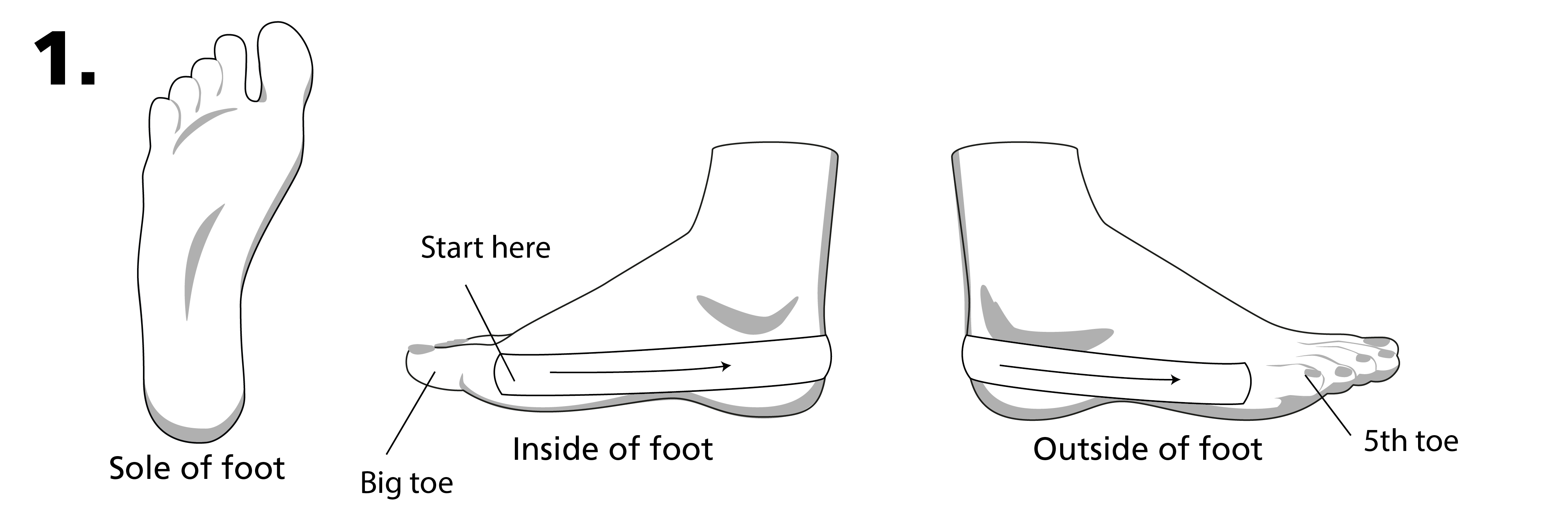
Anchor strips: Attach the first piece of tape on the inner part of your foot as shown on the diagram and take it around the back of the heel and finish it on the outer part of the foot. Apply some tension on the tape to avoid wrinkling of the tape and to also ensure enough support for the plantar fascia tissue.
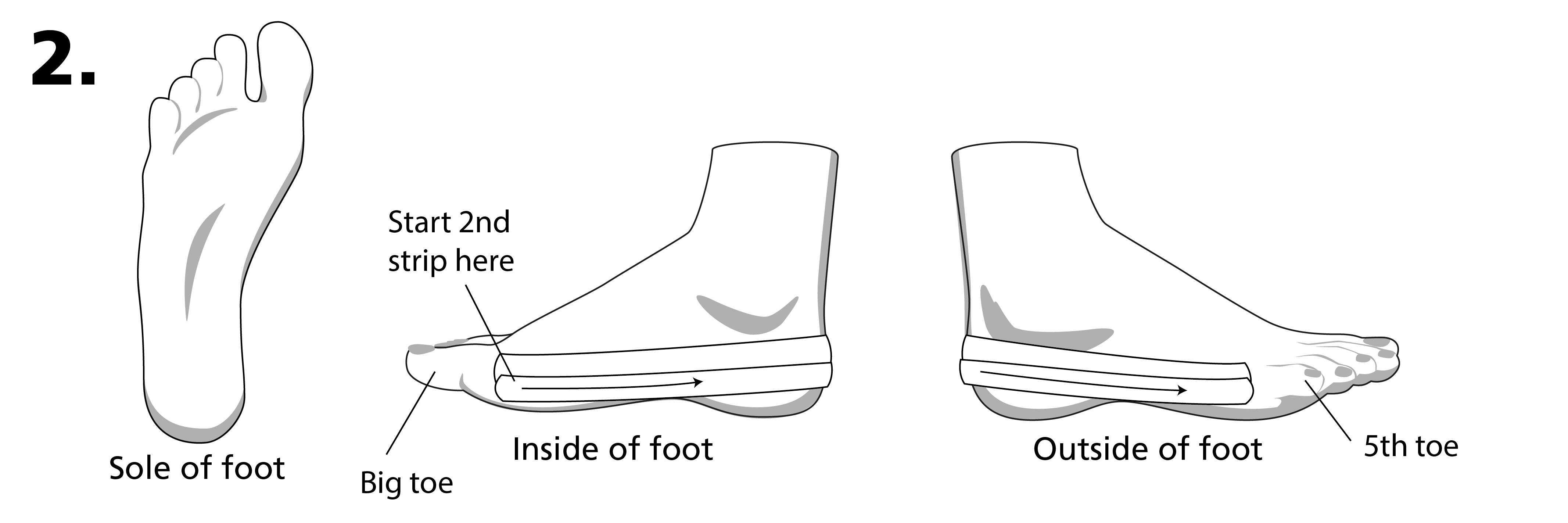
Anchor strips: The second anchor strip can be added to overlap the first strip by about 50% away from the first tape. A third anchor strip can be added if preferred.
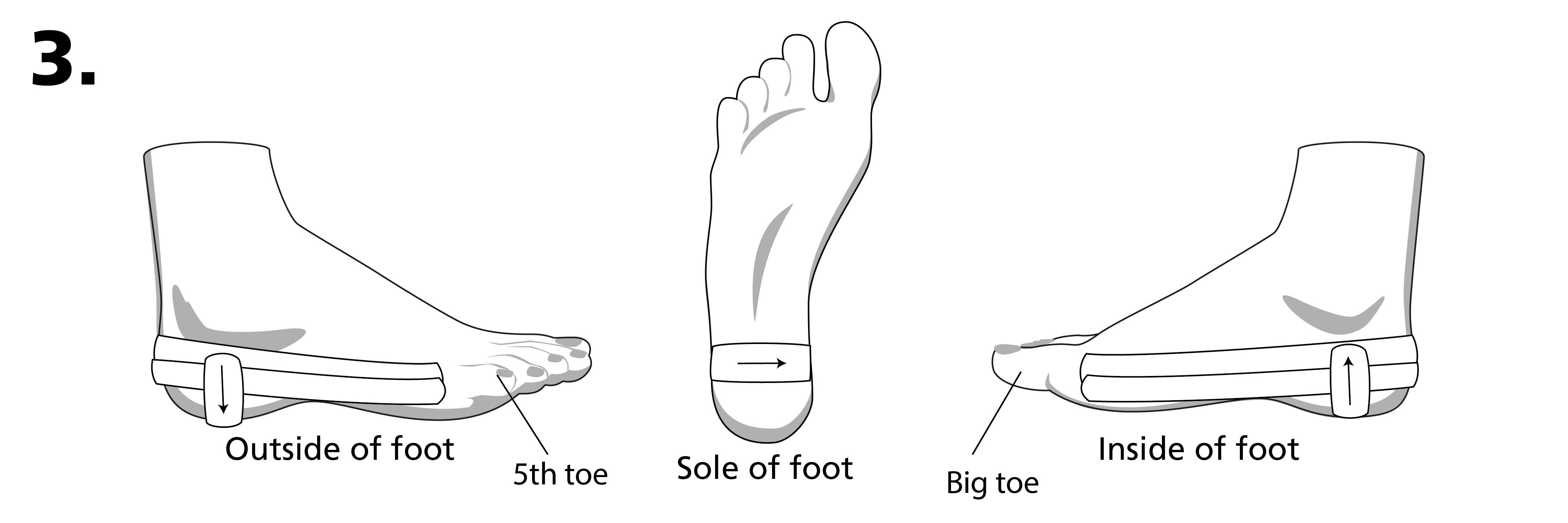
Underside strips: Start the underside strip tape just underneath the outer ankle bone, continue the tape across the centre of the heel and finish it underneath the inner ankle bone.
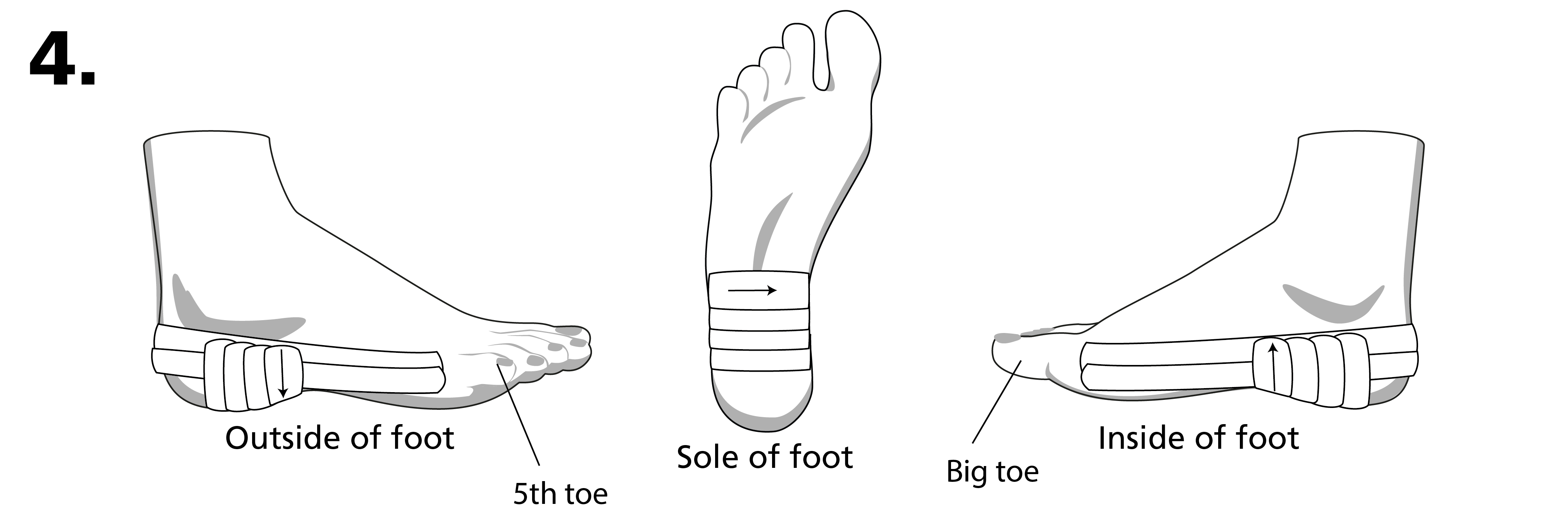
Underside strips: The second underside tape overlaps the first tape by half. Apply two more tapes in the same manner and ensure it ends just before the ball of the foot.
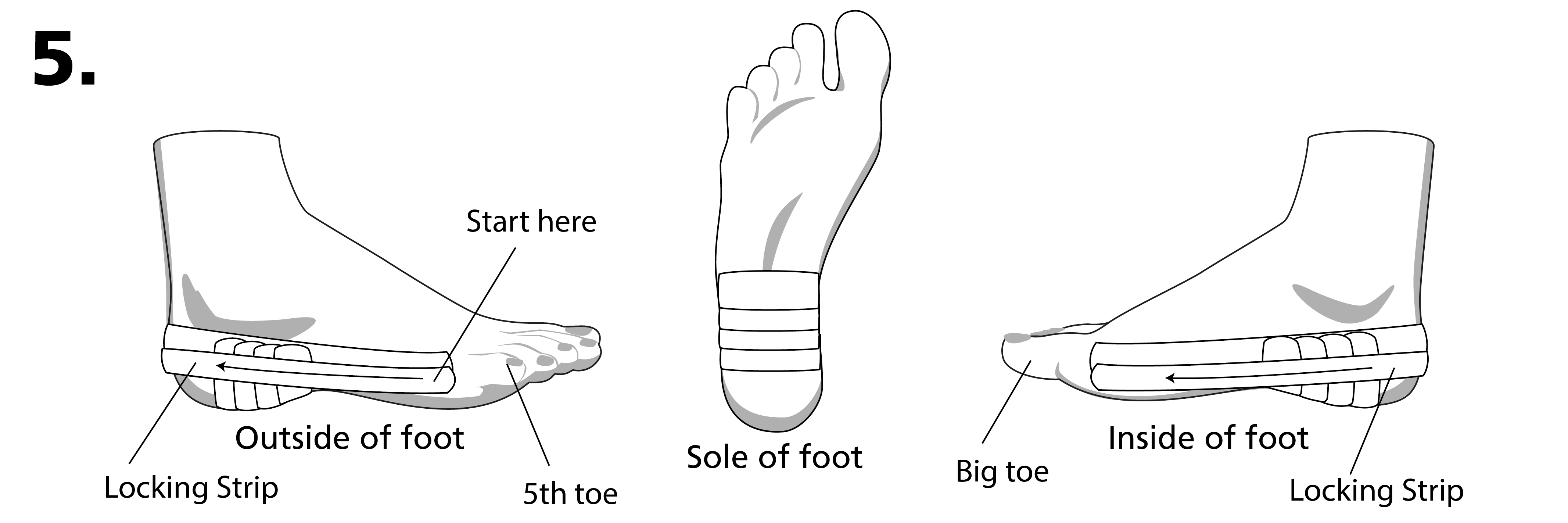
Locking strip: Start the locking strip tape from the outer border of the foot, take it around the back of the heel and finish the tape on the inner border of the foot. You may bend the 1st big toe upwards at the same time for better arch support.
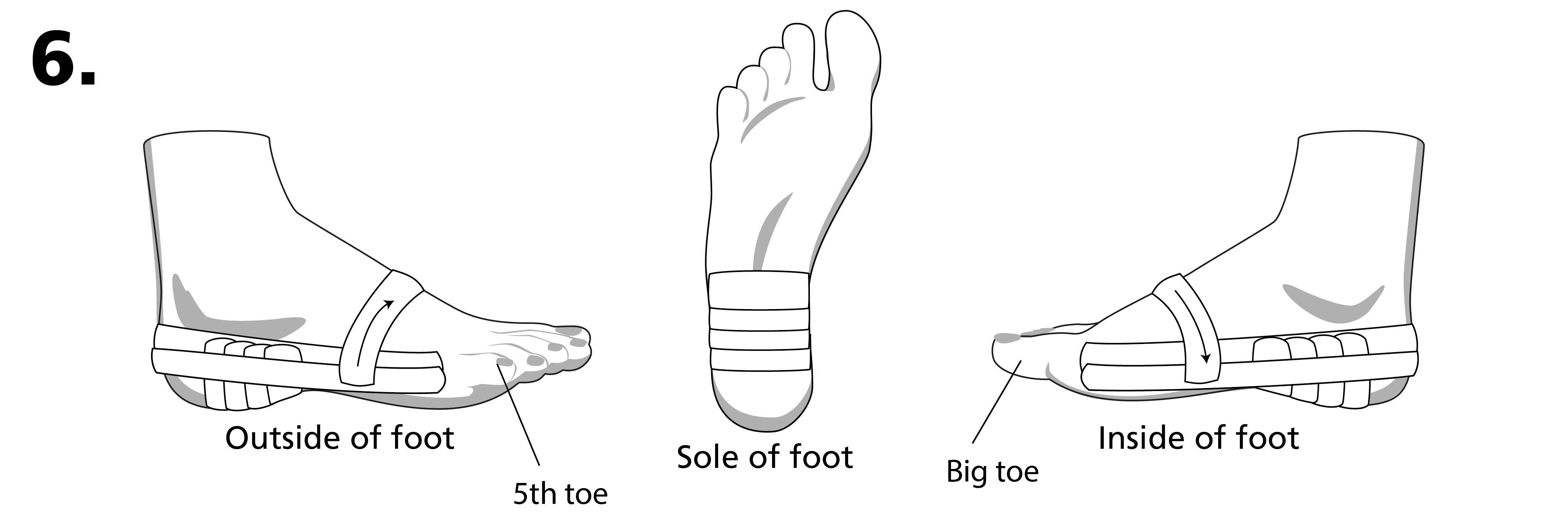
Securing tape: The final tape can be placed across the midfoot as shown on the diagram. Do not encircle the whole foot, as this will be too tight.